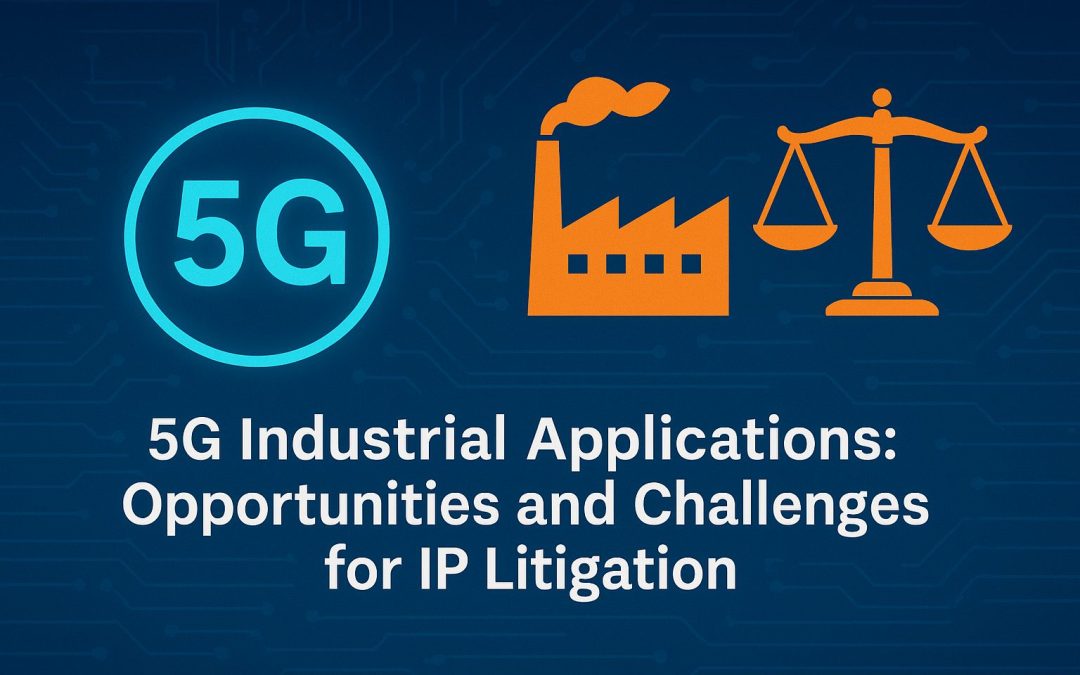The transition to 5G technology is reshaping industrial applications, moving beyond consumer-focused enhanced Mobile Broadband (eMBB) to enable advanced use cases through Massive Machine-Type Communications (mMTC) and Ultra-Reliable Low-Latency Communications (URLLC). According to Interdigital, a leader in wireless telecommunications and patent innovation, 5G is poised to overtake WiFi as the dominant wireless technology for industrial applications within the next five years. This shift presents significant implications for IP litigation, particularly for attorneys seeking a software expert witness or telecom expert witness to navigate complex patent disputes.
Key Findings from Industry Surveys
A survey conducted by Mobile World Live at Mobile World Congress, involving 345 professionals from the mobile and vertical enterprise sectors, highlights critical insights for IP litigation attorneys:
- Critical Role of mMTC and URLLC: 76% of respondents emphasized that mMTC, which supports large-scale device connectivity, and URLLC, which ensures low-latency and high-reliability communication, are vital for industrial operations. These technologies enable applications like autonomous vehicles and smart manufacturing, which are often at the core of patent disputes requiring a telecom expert witness to clarify technical nuances.
- Adoption Timeline: Nearly 60% of respondents anticipate adopting 5G for non-consumer industrial applications within the next 12 months to two years. This rapid adoption signals a growing need for a software expert witness to address potential infringement issues as new 5G-enabled devices and systems enter the market.
- Revenue Expectations: Approximately 40% of respondents predict that 5G industrial applications will account for 15%-20% of mobile industry revenue within five years. However, opinions vary, with 25% expecting less than 5% growth contribution, 19% anticipating 10%, and 16% projecting 15%. These projections underscore the uncertainty in 5G’s economic impact, which can complicate valuation in patent disputes.
- Regional Leadership: Asia leads in 5G service development, with 20% of respondents already using 5G for industrial applications and 44% in early-stage development. This regional disparity may influence where IP litigation emerges, as Asia’s advancements could drive patent filings and disputes.
- Partnership Models: Over 55% of respondents agree that partnerships between mobile operators and industrial enterprises are essential for 5G development. These collaborations may lead to complex licensing agreements, necessitating a telecom expert witness to interpret technical standards and patent scopes.
Benefits and Challenges of 5G in Industrial Applications
The primary benefits of mMTC and URLLC include enabling new services, supporting innovative applications, improving performance, and reducing latency. These advancements are critical in industries like automotive, manufacturing, and media, where 5G enables real-time data processing and connectivity for IoT devices. For IP litigation attorneys, understanding these benefits is essential when assessing the value of patents related to 5G technologies. A software expert witness can provide clarity on how these technologies function and their significance in patent claims.
However, challenges to 5G adoption include unclear business cases, immature standards, and uncertainty about benefits. These issues can lead to disputes over patent validity or infringement, as companies may contest the readiness or applicability of 5G standards. A telecom expert witness can help attorneys evaluate whether a patent aligns with current or emerging 5G standards, such as those defined by the 3GPP, the organization responsible for global mobile communication standards.
Implications for IP Litigation
The rise of 5G in industrial applications introduces new complexities in IP litigation. Patents covering mMTC and URLLC technologies are likely to be central to disputes, as these are foundational to 5G’s industrial use cases. Attorneys may need to engage a software expert witness to analyze source code or system architectures in infringement cases or a telecom expert witness to assess compliance with 5G standards. Additionally, the global nature of 5G adoption, particularly in Asia, may require navigating international patent laws, as outlined by resources from the World Intellectual Property Organization.
The uncertainty surrounding 5G’s business case and standards readiness also raises questions about patent enforceability. For instance, if a patent relies on an immature standard, its validity could be challenged. Attorneys can benefit from consulting experts to strengthen their case, particularly in disputes involving licensing agreements or standard-essential patents (SEPs). The European Telecommunications Standards Institute provides further context on SEPs, which are critical in 5G litigation.
Conclusion
The shift to 5G for industrial applications offers transformative opportunities but also significant challenges for IP litigation. As industries adopt mMTC and URLLC, the demand for specialized expertise in patent disputes will grow. Engaging a software expert witness or telecom expert witness can provide critical technical insights, ensuring robust representation in complex cases. For comprehensive support in navigating 5G-related IP challenges, visit Sidespin Group to explore expert witness services tailored to IP litigation needs.

